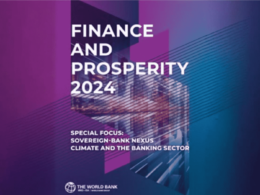Environmental regulations and policies are pivotal in advancing the global adoption and construction of zero-emission buildings (ZEBs). A new report reveals that the global zero-emission building market, valued at $28.7 billion in 2023 is projected to reach $155.1 billion by 2033. The Compound Annual Growth Rate (CAGR) of 18.4% is expected from 2024 to 2033.
According to a report by Allied Market Research titled “Zero Emission Buildings Market by Element Type (Lighting, Walls & Roofs, HVAC Systems, and Others), Building Type (Residential and Commercial): Global Opportunity Analysis and Industry Forecast, 2024-2033,” zero emission building market is propelled by various key drivers. Some drivers include stringent environmental regulations, increasing energy costs that make energy-efficient buildings more appealing, and technological advancements in building materials and renewable energy systems.
Additionally, growing consumer awareness and demand for sustainable living and working environments, along with government financial incentives and subsidies, further propel market growth. However, the market faces challenges such as high initial construction costs, technical and design complexities, and a shortage of skilled labour. Despite these hurdles, opportunities abound in sustainable building technology innovation, urbanisation, smart city projects, retrofitting existing buildings to zero-emission standards, and corporate sustainability goals. The rise in green financing options also supports future market growth.
The report highlights that Heating, Ventilation, and Air Conditioning (HVAC) systems are crucial in zero-emission buildings due to their significant impact on energy consumption. Advanced HVAC technologies like high-efficiency heat pumps, energy recovery ventilation systems, and smart thermostats are essential for achieving energy efficiency and maintaining indoor air quality.
The residential sector is seeing notable growth in zero-emission building practices, driven by increasing consumer awareness of environmental sustainability and the long-term cost benefits of energy-efficient homes. Homeowners are becoming more aware of their carbon footprints and the benefits of energy-efficient buildings, such as lower utility bills and better indoor air quality.
Also, many governments are implementing regulations and incentives to promote zero-emission buildings, including tax credits, subsidies, and grants for incorporating energy-efficient technologies and renewable energy systems, supporting the growth.
The report further highlights that in the Asia-Pacific region, rapid urbanisation is driving demand for residential and commercial buildings, presenting opportunities to integrate zero-emission principles into new developments. Countries such as Japan, China, South Korea, and Australia are enacting policies to promote energy efficiency and reduce carbon emissions. Japan’s “zero emission buildings roadmap” aims for all newly constructed public buildings to be zero emission by 2030, while China’s Green Building Action Plan supports zero-emission buildings through incentives and stricter codes.
The report offers a comprehensive analysis of key players in the zero-emission buildings market, highlighting their strategies, product portfolios, and competitive positions. Some key players include Skanska AB, Bouygues Construction, Honeywell International Inc, Siemens AG, Johnson Controls International plc, Schneider Electric, Tesla, Inc., SunPower Corporation, Mitsubishi Electric Corporation and GreenTree Global.






















